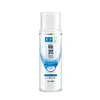What's inside
What's inside
 Key Ingredients
Key Ingredients

 Benefits
Benefits

 Ingredients Side-by-side
Ingredients Side-by-side

Sodium Hyaluronate
HumectantHydrolyzed Hyaluronic Acid
HumectantWater
Skin ConditioningGlycerin
HumectantDipropylene Glycol
HumectantTranexamic Acid
AstringentButylene Glycol
HumectantDiglycerin
HumectantPEG-8
HumectantPEG-6
HumectantPEG-32
HumectantStyrene/Vp Copolymer
Polysorbate 20
EmulsifyingHydroxylated Lecithin
EmulsifyingCitric Acid
BufferingTocopherol
AntioxidantMagnesium Ascorbyl Phosphate
AntioxidantPentylene Glycol
Skin ConditioningPhenoxyethanol
PreservativeDipotassium Glycyrrhizate
HumectantDisodium EDTA
Sodium Hyaluronate, Hydrolyzed Hyaluronic Acid, Water, Glycerin, Dipropylene Glycol, Tranexamic Acid, Butylene Glycol, Diglycerin, PEG-8, PEG-6, PEG-32, Styrene/Vp Copolymer, Polysorbate 20, Hydroxylated Lecithin, Citric Acid, Tocopherol, Magnesium Ascorbyl Phosphate, Pentylene Glycol, Phenoxyethanol, Dipotassium Glycyrrhizate, Disodium EDTA
 Reviews
Reviews

Alternatives
Ingredients Explained
These ingredients are found in both products.
Ingredients higher up in an ingredient list are typically present in a larger amount.
Diglycerin is a humectant. It is derived from glycerin, which is naturally found in your skin.
As a humectant, it helps draw moisture to the skin from the air.
Dipropylene Glycol is a synthetically created humectant, stabilizer, and solvent.
This ingredient helps:
Dipropylene glycol is technically an alcohol, but it belongs to the glycol family (often considered part of the ‘good’ alcohols). This means it is hydrating and gentle on skin unlike drying solvent alcohols like denatured alcohol.
As a masking agent, Dipropylene Glycol can be used to cover the smell of other ingredients. However, it does not have a scent.
Studies show Dipropylene Glycol is considered safe to use in skincare.
Learn more about Dipropylene GlycolDisodium EDTA plays a role in making products more stable by aiding other preservatives.
It is a chelating agent, meaning it neutralizes metal ions that may be found in a product.
Disodium EDTA is a salt of edetic acid and is found to be safe in cosmetic ingredients.
Learn more about Disodium EDTAPentylene glycol is typically used within a product to thicken it. It also adds a smooth, soft, and moisturizing feel to the product. It is naturally found in plants such as sugar beets.
The hydrophilic trait of Pentylene Glycol makes it a humectant. As a humectant, Pentylene Glycol helps draw moisture from the air to your skin. This can help keep your skin hydrated.
This property also makes Pentylene Glycol a great texture enhancer. It can also help thicken or stabilize a product.
Pentylene Glycol also acts as a mild preservative and helps to keep a product microbe-free.
Some people may experience mild eye and skin irritation from Pentylene Glycol. We always recommend speaking with a professional about using this ingredient in your routine.
Pentylene Glycol has a low molecular weight and is part of the 1,2-glycol family.
Learn more about Pentylene GlycolPhenoxyethanol is a preservative that has germicide, antimicrobial, and aromatic properties. Studies show that phenoxyethanol can prevent microbial growth. By itself, it has a scent that is similar to that of a rose.
It's often used in formulations along with Caprylyl Glycol to preserve the shelf life of products.
Sodium Hyaluronate is hyaluronic acid's salt form. It is commonly derived from the sodium salt of hyaluronic acid.
Like hyaluronic acid, it is great at holding water and acts as a humectant. This makes it a great skin hydrating ingredient.
Sodium Hyaluronate is naturally occurring in our bodies and is mostly found in eye fluid and joints.
These are some other common types of Hyaluronic Acid:
Learn more about Sodium Hyaluronate